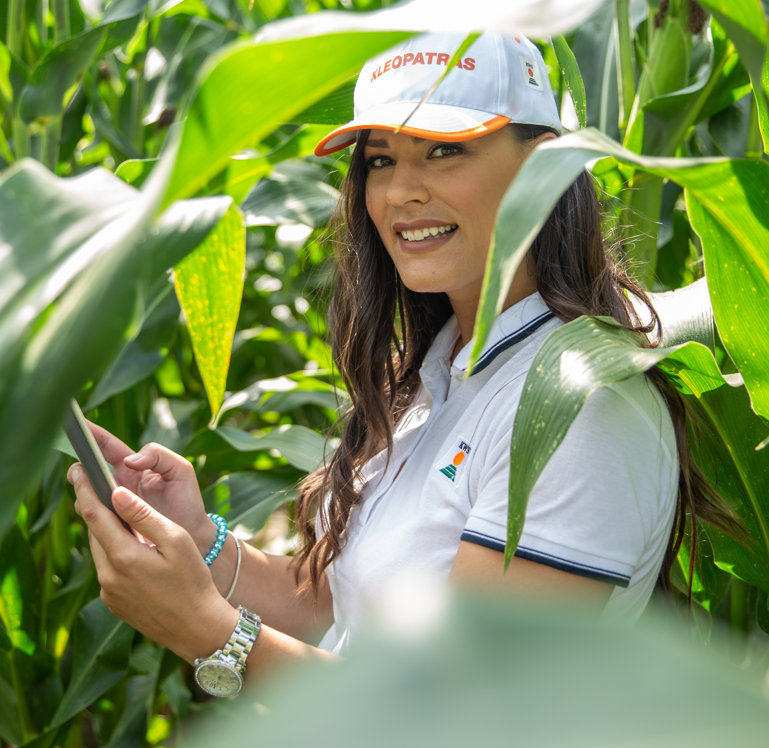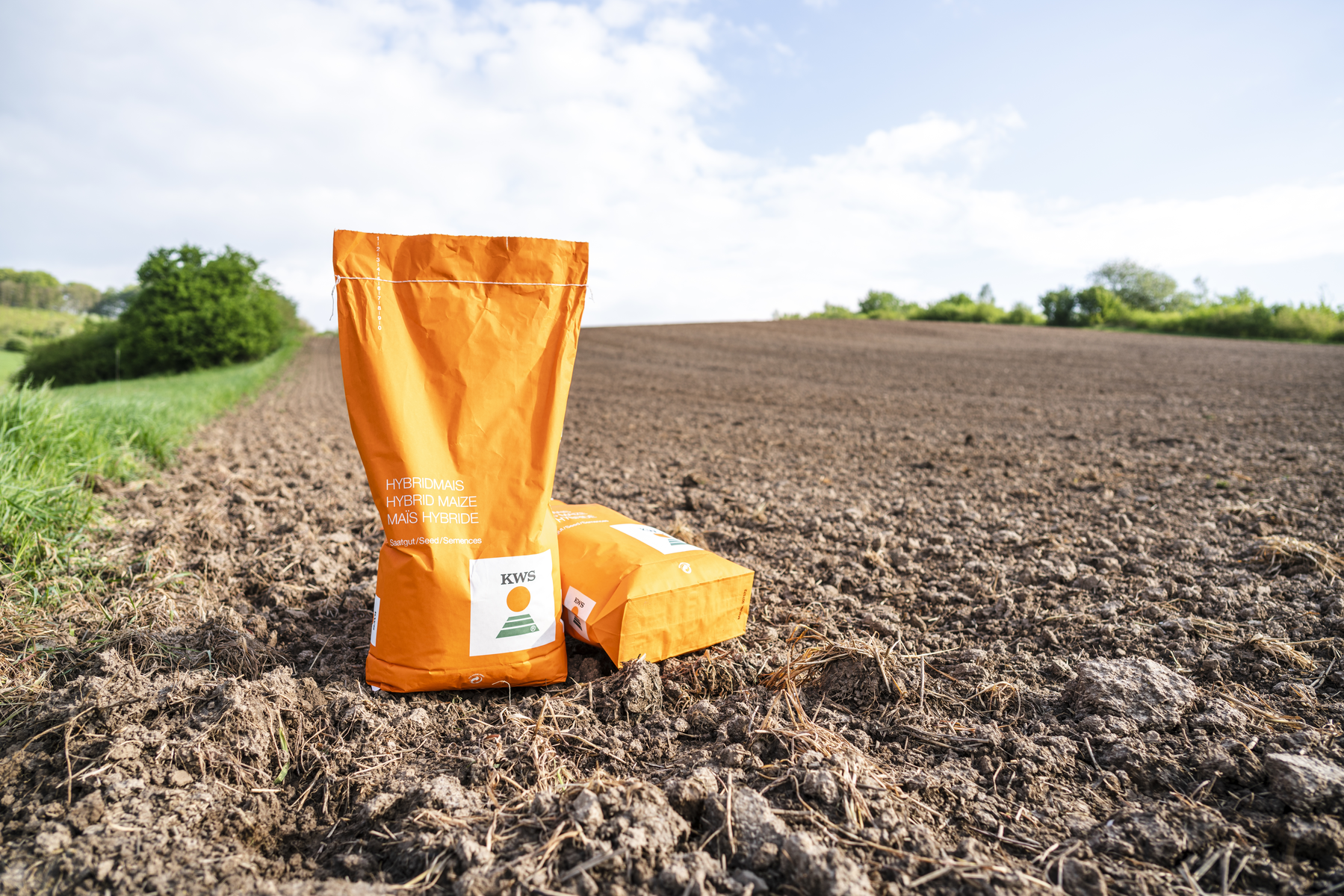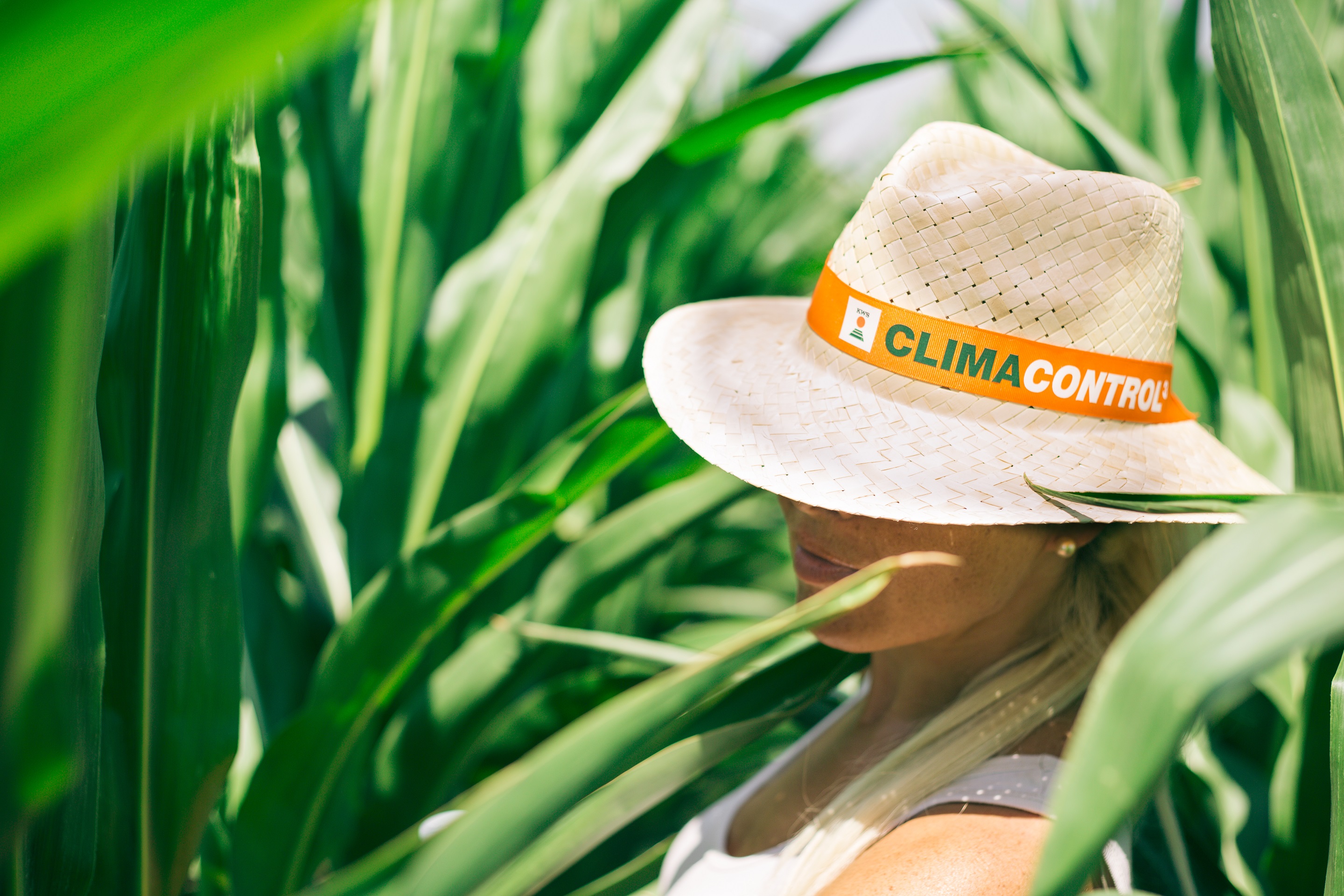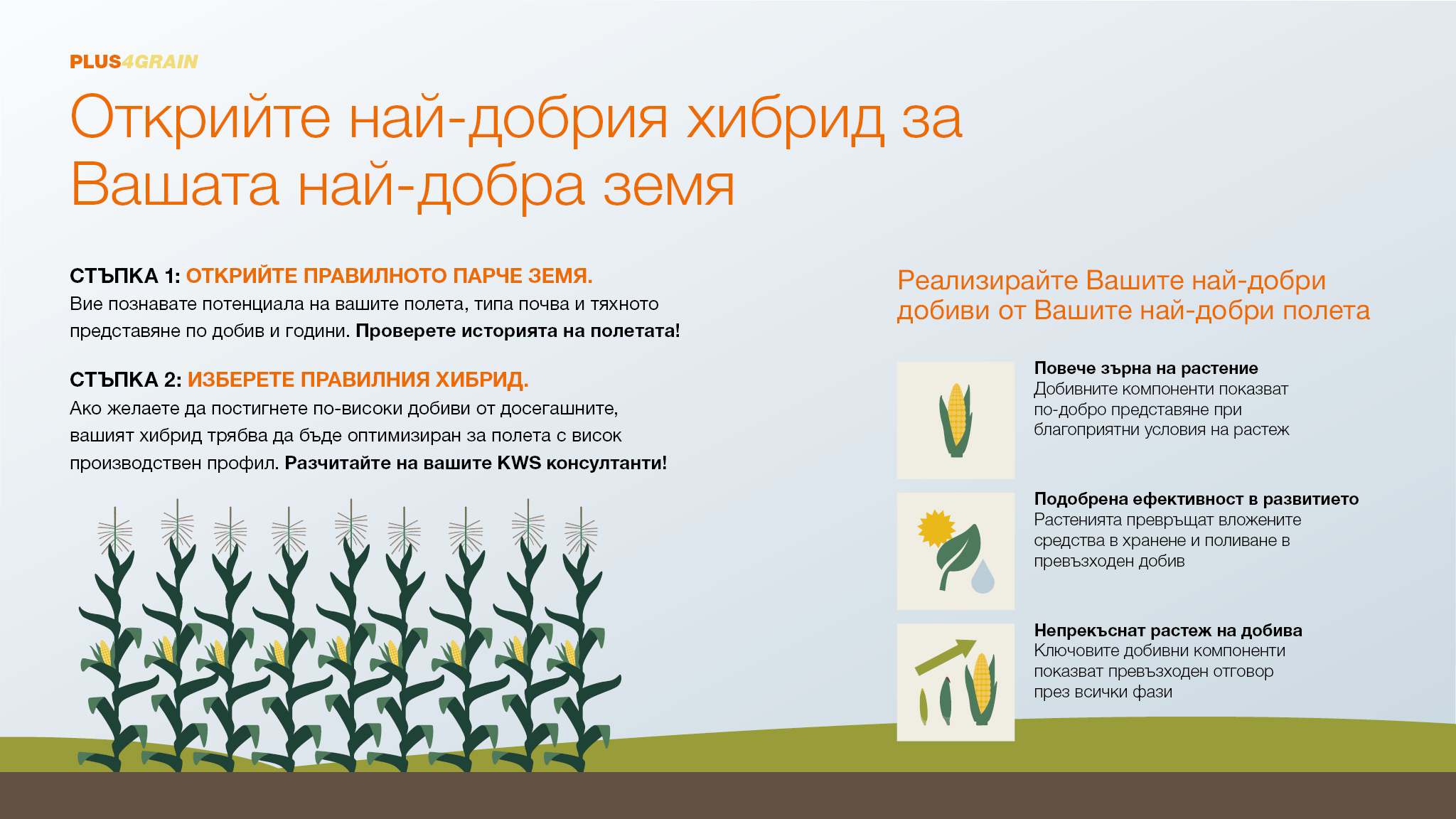How to create a plot to use the tool
The new digital tool “Variable Rate Sowing” from KWS defines the ideal planting density for corn on the basis of specific field conditions. KWS combines satellite images delivering objective data with long-standing empirical values and varietyspecific know-how. After all, not all varieties react alike to changes in the planting density
How to use the tool
Register in MyKWS
Login to myKWS. If you don't have an account yet, you can register for free. Enter the necessary data to be able to use this top tool.
Create plots
Activate the voucher in the tool using the codes you receive from your KWS consultant. Then create your plots for the maize crop. You can draw the plot boundaries manually or import them. Add your sowing details too.
Use maps for variable sowing
After creating the plots, you receive a specific assessment of the production capacity of your land based on satellite images recorded over several years. The calculation process can take up to 24 hours. You can export the seeding maps and transfer them to the seed drill's isobus terminal.
Često postavljana pitanja o setvi sa promenljivom normom
Obradivo zemljište je raznoliko, tako da se tipovi i osobine zemljišta mogu razlikovati unutar jednog polja.Na nekim delovima njive prisutno je više vode i bolji su uslovi za razvoj biljaka u odnosu na druge delove.
Na ove razlike u delovima njive možete uticati podešavanjem norme setve. U delovima njive gde su prisutni povoljniji uslovi, korisno je primeniti veću gustinu setve. Ako su uslovi u njivi manje povoljni, možete smanjiti gustinu setve i na taj način smanjiti konkurenciju između biljaka kukuruza za vodom i hranljivim materijama. Promenom norme setve možete prilagoditi količinu semena specifičnim uslovima njive na vašem području.
Sistem koristi višegodišnje podatke sa satelita Sentinel-2. Iz satelitskih podataka analizira se rast biomase proteklih godina. Ovaj rast biomase služi kao pokazatelj razlike u kapacitetu prinosa na tom području. Delovi polja sličnog kapaciteta prinosa kombinuju se s zonama setve. Na visokoplodnim delovima može se odrediti veći intenzitet setve u zavisnosti od hibrida. Intenzitet setve smanjuje se na delovima sa manjom plodnošću. Setvu i intenzitet setve možete ručno prilagoditi Vašim potrebama u bilo kom trenutku.
Because site-specific sowing varies the seed rate in the area on the basis of a map, an electronically controlled seeder is necessary. A GPS system for orientation on the field and a terminal for control are also necessary. The seed maps are loaded onto this terminal.
If you don't have such technology the maps that you can see in our platform are a good indication of the potential in your field and can be as interesting.
The system is free of charge. However, you need a voucher code to activate the area.
You can obtain voucher codes from your local KWS maize advisor. Feel free to ask your advisor about it.
The more precisely the field boundaries are drawn in, the better the later assessment of the yield capacity will be. You should pay particular attention to drawing in field islands, such as groups of trees within the field, with the polygon tool. You should also make sure that forest edges are drawn in as accurately as possible.
In addition to drawing in the field boundaries manually, you can also import field boundaries from your agricultural application or your field boundary index. The file formats Shape and KML are supported.
In the field administration you will find all the fields that you have already created in other KWS Tools or that you used in KWS Tools last year. You can use the field administration to create these fields quickly and easily.
After creating the plots, an automatic calculation process takes place. In this process, satellite images of the last 5 years are calculated. Differences in biomass are considered and thus the yield capacity of the sub-area is concluded. You will receive an e-mail at the beginning and at the end of the calculation. The calculation process takes some time and can take up to 24 hours.
The result of the calculation process is the so-called classification map and represents an assessment of the sub-area-specific yield capacity. This map is created individually for each field. Therefore, zones within a field can be compared very well. Different plots, however, are less easy to compare.
The classification map is based on the minimum and maximum biomass on average over the last 5 years. Whenever the biomass on partial plots deviated significantly from the rest of the plot in the last 5 years, not due to soil effects, but due to other effects, this should be taken into account in the subsequent sowing zones. This includes land division and separate cultivation, as the biomass on the subplots has always been different due to separate cultivation. Other examples are beet heaps or flower strips. Therefore, when interpreting the map, you should take the field history into account and, if necessary, manually adjust the sowing zones accordingly.
Satellite data from the last five years are used to calculate the classification maps. As the biomass on the subplots usually also differs significantly in the case of split management, this has a direct effect on the classification map. Biomass differences due to different soil properties can then be clearly overlaid by differences in management practices. Subsequently, in this form, the map does not reflect the site-specific yield capacity of the soils. This applies to all differences in management practices over the last five years and applies not only to a classical division of the field, but also to flower strips or similar. In such cases, the sowing zones should be checked after the classification has been calculated and, if necessary, adjusted manually.
Based on your information on variety, soil type, direction of use and irrigation, you will receive a recommendation for the seed strength. This recommendation is the preset seed strength in your seed maps. Depending on the number of classes selected, between 3 and 5 different seed strengths are varied per field. You can change the number of classes at any time. You can also change the seed strength per seed class at any time. Please note that the seed rate must be between 6 and 13 grains/m². Furthermore, you can change the assignment of a zone on the map to a seed strength.
The sowing cards are only suitable for sowing maize. It is not possible to use them for sowing other crops or for fertiliser application.
Variable Rate seeding of KWS Varieties
Važno je da se lokacija, raznolikost zemljišta i gustina setve usklade. Na taj način se maksimalno koristi potencijal zemljišta i hibrida. Naši saveti za gustinu setve Vam mogu biti od koristi. Ova tablica vam pomaže u odlučivanju koja gustina setve, pod kojim uslovima odgovara kojem hibridu i koliko treba prilagoditi gustinu setve različitim uslovima proizvodnje.
Table with varieties and Zones
Zone 1 is less good and Zone 5 is very good
| Hibrid kukuruza | FAO grupa | Dobri | Srednji | Loši |
| KWS SMARAGD NOVO | FAO 350 | 79.000 | 75.000 | 71.000 |
| KWS 4484 | FAO 380 | 79.000 | 75.000 | 71.000 |
| KWS KASHMIR NOVO | FAO 400 | 79.000 | 75.000 | 71.000 |
| KONFITES | FAO 430 | 79.000 | 75.000 | 71.000 |
| KOLUMBARIS | FAO 460 | 79.000 | 75.000 | 71.000 |
| KWS ORLANDO NOVO | FAO 520 | 75.000 | 71.000 | 68.000 |
| MIKADO | FAO 550 | 71.000 | 68.000 | 65.000 |
| KONSENS | FAO 600 | 71.000 | 68.000 | 65.000 |
| KWS LUKAS NOVO | FAO 600 | 71.000 | 68.000 | 65.000 |
Maybe you are also interested in the following
If you have any question please contact us




